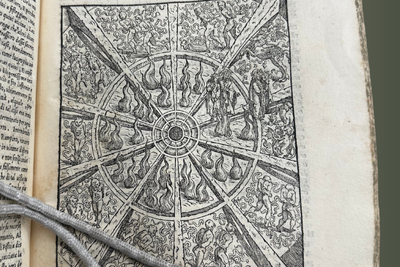With a gifted musician for a grandfather and an opera singer for an uncle, it’s no surprise that Rebecca Novelli chose an artistic path. A California native, she worked in southern California for years as a writer, editor and educator, before moving to Seattle in 2006. More than 20 years ago, she sat down to write a book set in Italy, spurred by her travels. In October, Black Heron Press will publish her novel, “The Train to Orvieto,” a family saga that unfolds over three decades. In an early review, Ron Reagan, Jr. called the book “thoughtful, engaging and acutely observed.” Recently, Novelli sat down with us to talk about the new book.
Writing a novel is such a huge undertaking. What led you to writing in the first place?
I was always an avid reader, even as a child, and in college, I thought I might someday write a novel. My love of reading led to a career in communications and education. Finally, when I decided to see if I could write a book, it was almost as a lark. Then after I wrote it, I thought: Well, maybe I can get it published. Writing a novel is hard work. I started it over six times, so in some ways, this is actually my seventh book. But with each new draft, the characters returned and their stories became clearer.
How did you come up with the idea?
I was at a point in my life where I wanted to spend more time in Italy, and the book became the vehicle. The seed for the story was sparked by an incident that happened to me when I was 26 years old, traveling in Italy. On a train from Rome to Florence, I met an Italian soldier. As we traveled along, we talked and talked. He was getting off at Orvieto and I was continuing on. When the train pulled into the station, he jumped up, grabbed me and gave me a French kiss before running off the train. I was so surprised! Many years later, as I thought about my book, I thought: What if the story had not ended there? What would have happened after that? That scene on the train is the only autobiographical detail in the book. The rest is pure fiction.
How did you choose your characters and setting?
What intrigues me is how we decide what our personal truth is and how we hang on to it. Initially, I chose Orvieto, a beautiful hill town in southwest Umbria, because the train incident I described happened there. But I found that the town’s isolation and fortified walls are a lot like our own personal truths. And so the town took on symbolic value, as well. Although I had no real plans for the characters at first, I did have to do some thinking about their backgrounds. For example, I needed a reason for the main character to be in Italy in 1935. I decided she was a painter there to study art, but then she meets a soldier on the train who derails her plans.
So art plays a key role in the book, but you took it one step further.
I have always liked to paint and draw, and I talked with my publisher about my illustrating the cover. We discussed the feeling we wanted to capture—a combination of someone seeking her way, leaving familiar terrain, yet contemplative, even uncertain, about her circumstances and choices. I searched for images to convey those feelings and we narrowed the selection to three images, which we tested with friends and family members. Ultimately, the publisher made the final choice. The model was a family friend who is a trained actress. We rented period clothing and did a photo shoot in my living room. I created the composition from that.
Did your Italian heritage influence the book at all?
I have studied Italian since 2000. I thought learning the language would help me with the book, and it did. As with many immigrants, my grandparents were eager to assimilate so they did not speak Italian at home. My father never learned Italian. For me, to return to my roots and learn the language made me more aware of what their life might have been like.
Is the novel historically accurate?
With a story that spans three decades, I realized early on that I could not master the history with any authority. I needed to limit myself to the details pertinent to the story. I visited the cathedral in Orvieto, for example, and museums in Florence and Rome. I read books about Italian society and researched social movements. When I heard that friends were traveling in Italy for a year, I asked them to look for specific houses and streets in Orvieto and Florence that would work for the book.
Later, when my publisher mentioned we might be published in Italy, I wanted to make sure all the details were correct from a native Italian’s point of view. My language teacher helped. From her, I learned that Italian names, both first and last, were linked to social class. To better reflect my characters’ lives, I ended up changing many of the names in the book.
As a first-time novelist, was there anything in the process that surprised you?
Yes, how my characters turned up and did things. It was almost as if I had no control over it. At one point, I thought I would write some scenes in the U.S., but my characters “refused” to go there. Basically, the life went out of the story when I tried setting it in the U.S. The characters would not change who they were just because I wanted to write a certain scene.






























